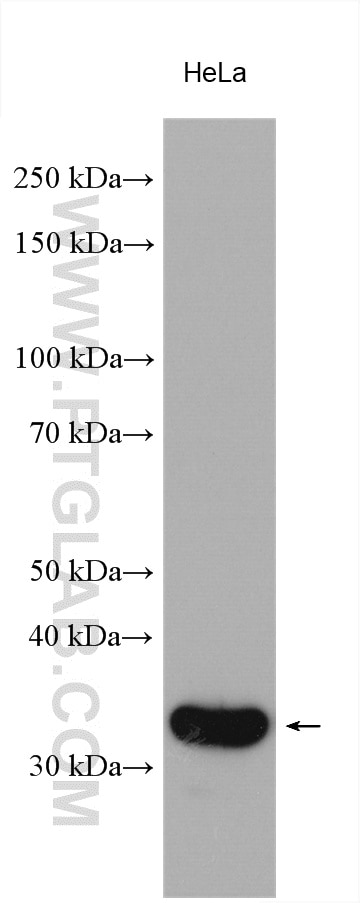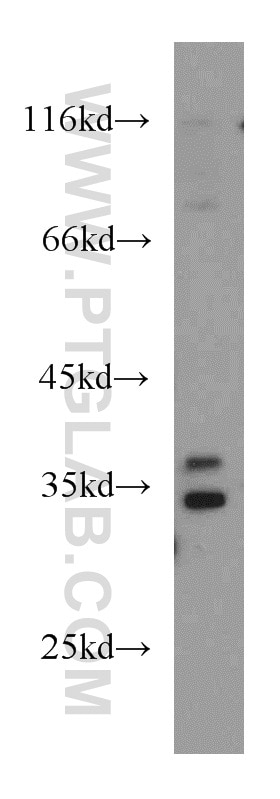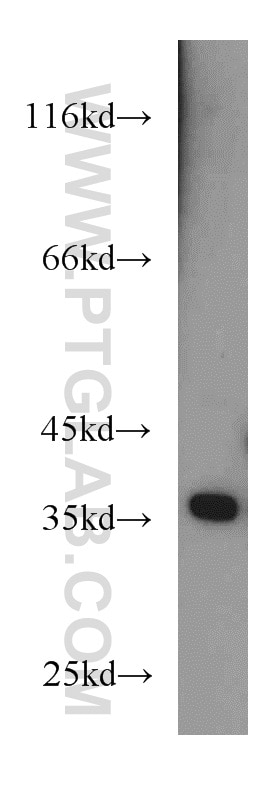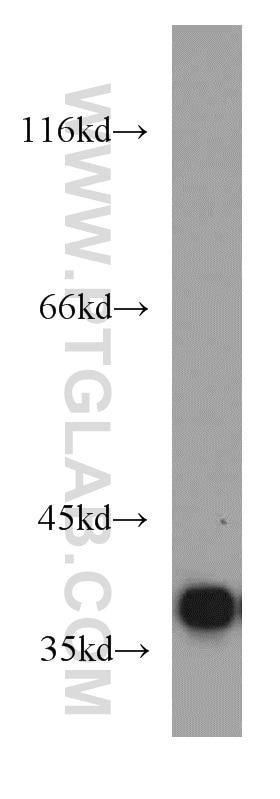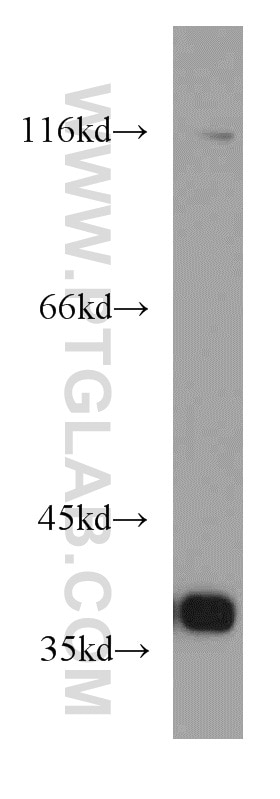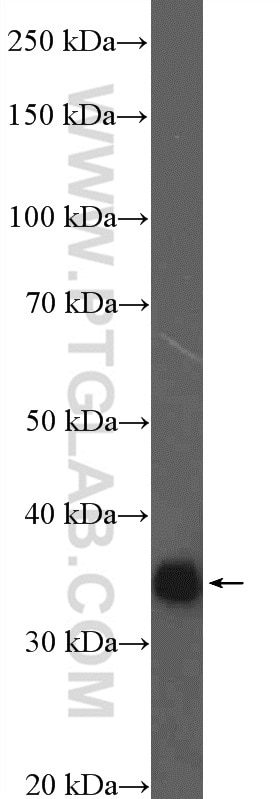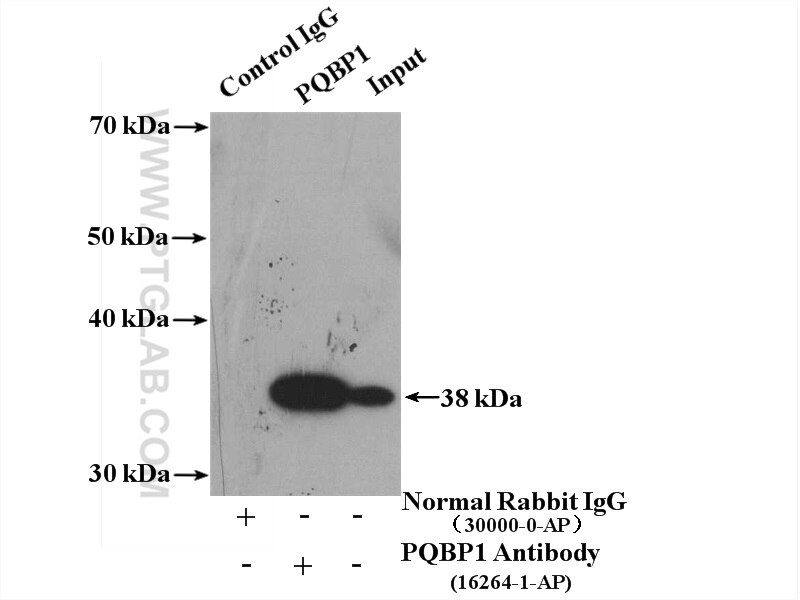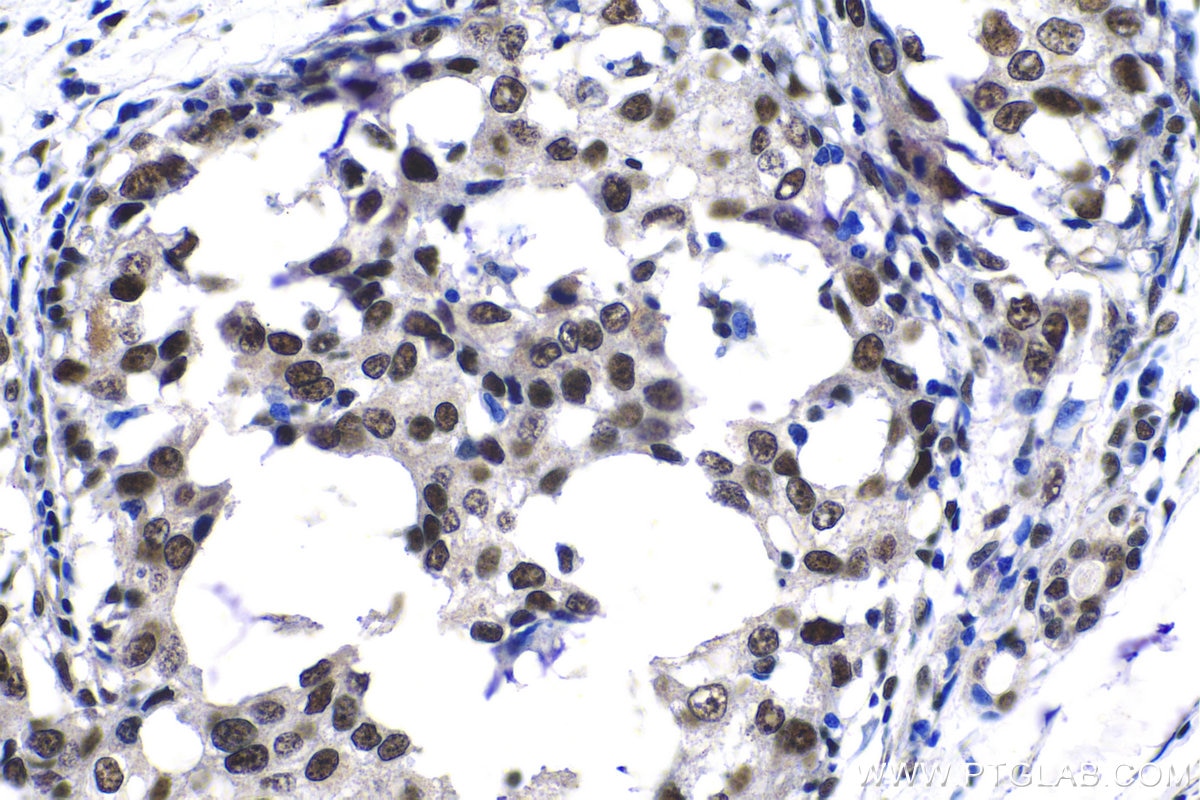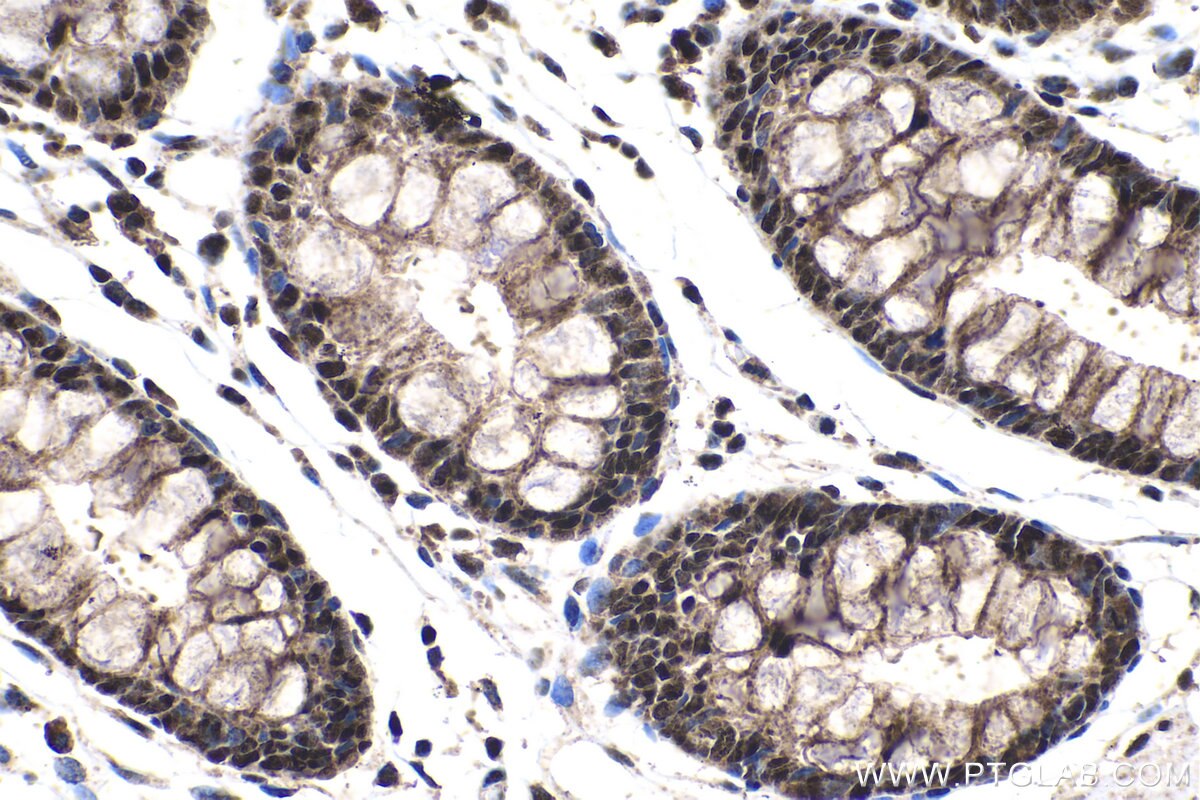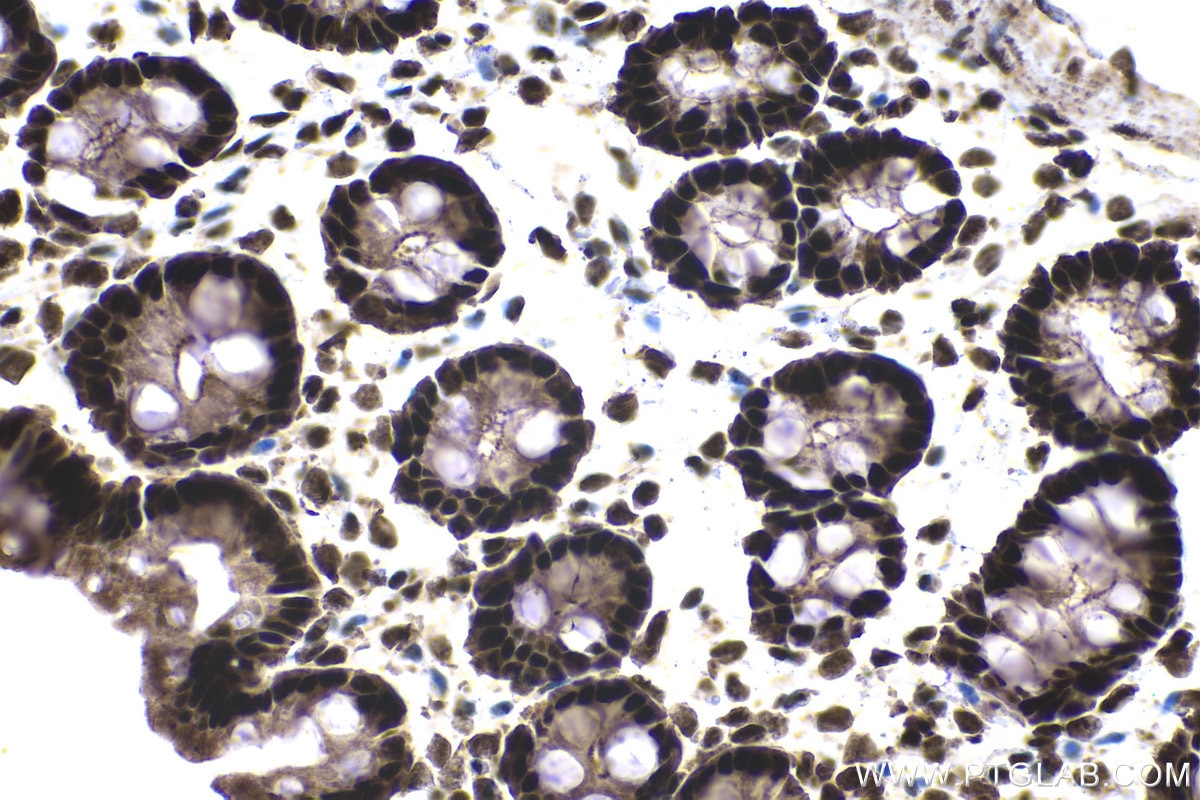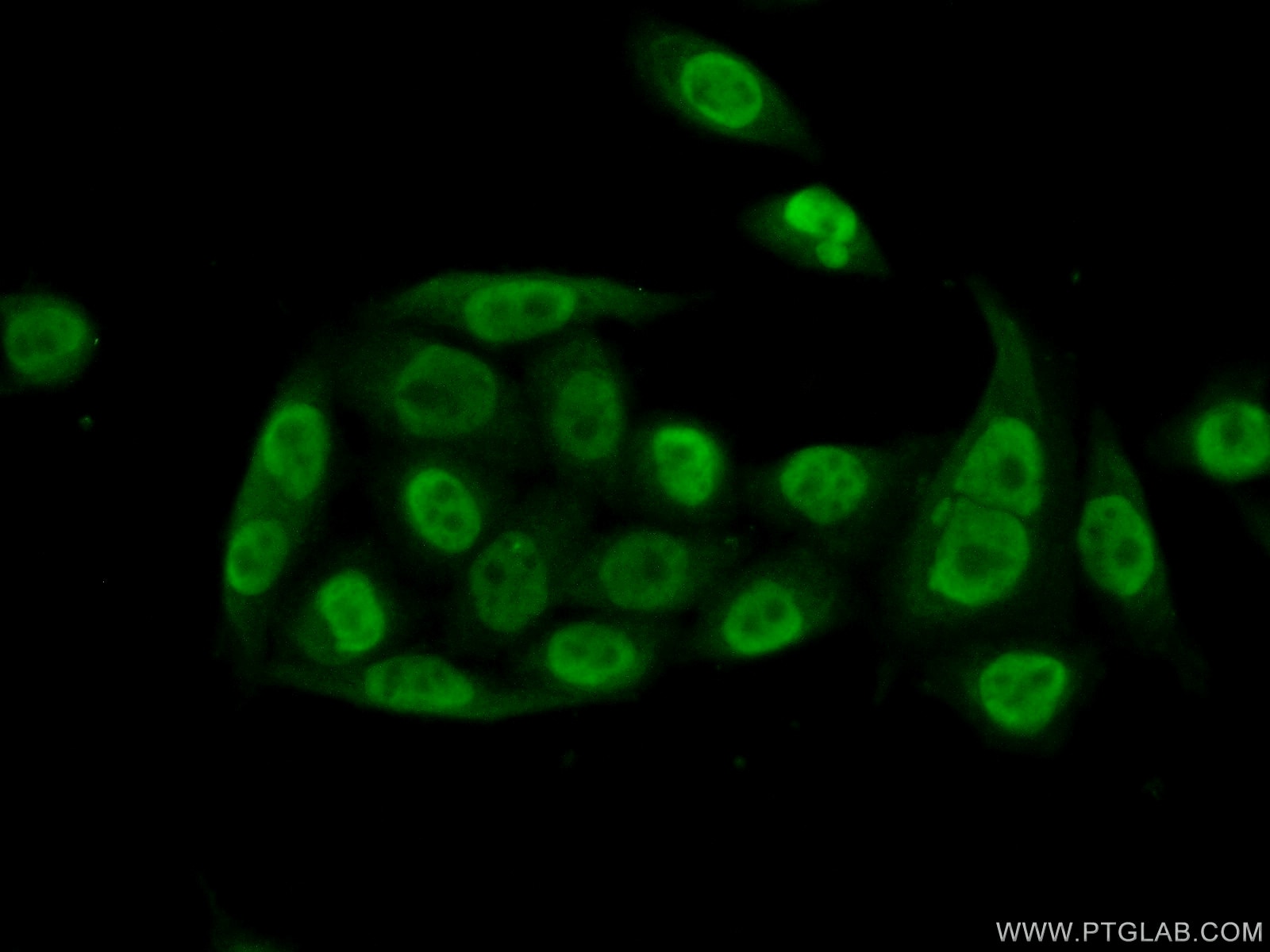Anticorps Polyclonal de lapin anti-PQBP1
PQBP1 Polyclonal Antibody for WB, IP, IF, IHC, ELISA
Hôte / Isotype
Lapin / IgG
Réactivité testée
Humain, rat, souris
Applications
WB, IHC, IF/ICC, IP, ELISA
Conjugaison
Non conjugué
N° de cat : 16264-1-AP
Synonymes
Galerie de données de validation
Applications testées
| Résultats positifs en WB | cellules HeLa, tissu cérébral de rat, tissu cérébral de souris, tissu de muscle squelettique de souris |
| Résultats positifs en IP | tissu cérébral de souris, |
| Résultats positifs en IHC | tissu de cancer du sein humain, tissu de côlon de rat, tissu de côlon humain il est suggéré de démasquer l'antigène avec un tampon de TE buffer pH 9.0; (*) À défaut, 'le démasquage de l'antigène peut être 'effectué avec un tampon citrate pH 6,0. |
| Résultats positifs en IF/ICC | cellules HeLa |
Dilution recommandée
| Application | Dilution |
|---|---|
| Western Blot (WB) | WB : 1:1000-1:4000 |
| Immunoprécipitation (IP) | IP : 0.5-4.0 ug for 1.0-3.0 mg of total protein lysate |
| Immunohistochimie (IHC) | IHC : 1:500-1:2000 |
| Immunofluorescence (IF)/ICC | IF/ICC : 1:50-1:500 |
| It is recommended that this reagent should be titrated in each testing system to obtain optimal results. | |
| Sample-dependent, check data in validation data gallery | |
Applications publiées
| WB | See 2 publications below |
| IHC | See 1 publications below |
| IF | See 1 publications below |
| IP | See 1 publications below |
Informations sur le produit
16264-1-AP cible PQBP1 dans les applications de WB, IHC, IF/ICC, IP, ELISA et montre une réactivité avec des échantillons Humain, rat, souris
| Réactivité | Humain, rat, souris |
| Réactivité citée | Humain |
| Hôte / Isotype | Lapin / IgG |
| Clonalité | Polyclonal |
| Type | Anticorps |
| Immunogène | PQBP1 Protéine recombinante Ag9329 |
| Nom complet | polyglutamine binding protein 1 |
| Masse moléculaire calculée | 265 aa, 30 kDa |
| Poids moléculaire observé | 30-32 kDa |
| Numéro d’acquisition GenBank | BC012358 |
| Symbole du gène | PQBP1 |
| Identification du gène (NCBI) | 10084 |
| Conjugaison | Non conjugué |
| Forme | Liquide |
| Méthode de purification | Purification par affinité contre l'antigène |
| Tampon de stockage | PBS avec azoture de sodium à 0,02 % et glycérol à 50 % pH 7,3 |
| Conditions de stockage | Stocker à -20°C. Stable pendant un an après l'expédition. L'aliquotage n'est pas nécessaire pour le stockage à -20oC Les 20ul contiennent 0,1% de BSA. |
Informations générales
PQBP1 (Polyglutamine-binding protein 1) is also named as NPW38 and JM26. PQBP1 senses extrinsic tau 3R/4R proteins by direct interaction and triggers an innate immune response by activating a cyclic GMP-AMP synthase (cGAS)-Stimulator of interferon genes (STING) pathway (PMID: 34782623). PQBP1 is abundantly expressed in the central nervous system during development. PQBP1 is a component of the precatalytic spliceosome (B complex) that is involved in splicing. PQBP1 was predominantly localized in the cell nucleus. PQBP1 is overexpressed in various cancer types including breast cancer, colon cancer, and glioblastoma (PMID: 38342602).
Protocole
| Product Specific Protocols | |
|---|---|
| WB protocol for PQBP1 antibody 16264-1-AP | Download protocol |
| IHC protocol for PQBP1 antibody 16264-1-AP | Download protocol |
| IF protocol for PQBP1 antibody 16264-1-AP | Download protocol |
| IP protocol for PQBP1 antibody 16264-1-AP | Download protocol |
| Standard Protocols | |
|---|---|
| Click here to view our Standard Protocols |
Publications
| Species | Application | Title |
|---|---|---|
Mol Cell PQBP1 promotes translational elongation and regulates hippocampal mGluR-LTD by suppressing eEF2 phosphorylation. | ||
Acta Neuropathol Transportin 1 accumulates specifically with FET proteins but no other transportin cargos in FTLD-FUS and is absent in FUS inclusions in ALS with FUS mutations. | ||
